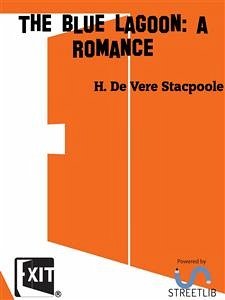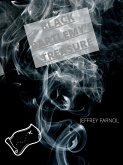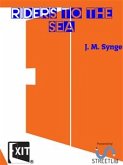CHAPTER I
WHERE THE SLUSH LAMP BURNS
Mr Button was seated on a sea-chest with a fiddle under his left ear. He was playing the "Shan van vaught," and accompanying the tune, punctuating it, with blows of his left heel on the fo'cs'le deck.
"O the Frinch are in the bay,
Says the Shan van vaught."
He was dressed in dungaree trousers, a striped shirt, and a jacket baize—green in parts from the influence of sun and salt. A typical old shell-back, round-shouldered, hooked of finger; a figure with strong hints of a crab about it.
His face was like a moon, seen red through tropical mists; and as he played it wore an expression of strained attention as though the fiddle were telling him tales much more marvellous than the old bald statement about Bantry Bay.
"Left-handed Pat," was his fo'cs'le name; not because he was left-handed, but simply because everything he did he did wrong—or nearly so. Reefing or furling, or handling a slush tub—if a mistake was to be made, he made it.
He was a Celt, and all the salt seas that had flowed between him and Connaught these forty years and more had not washed the Celtic element from his blood, nor the belief in fairies from his soul. The Celtic nature is a fast dye, and Mr Button's nature was such that though he had been shanghaied by Larry Marr in 'Frisco, though he had got drunk in most ports of the world, though he had sailed with Yankee captains and been man-handled by Yankee mates, he still carried his fairies about with him—they, and a very large stock of original innocence.
WHERE THE SLUSH LAMP BURNS
Mr Button was seated on a sea-chest with a fiddle under his left ear. He was playing the "Shan van vaught," and accompanying the tune, punctuating it, with blows of his left heel on the fo'cs'le deck.
"O the Frinch are in the bay,
Says the Shan van vaught."
He was dressed in dungaree trousers, a striped shirt, and a jacket baize—green in parts from the influence of sun and salt. A typical old shell-back, round-shouldered, hooked of finger; a figure with strong hints of a crab about it.
His face was like a moon, seen red through tropical mists; and as he played it wore an expression of strained attention as though the fiddle were telling him tales much more marvellous than the old bald statement about Bantry Bay.
"Left-handed Pat," was his fo'cs'le name; not because he was left-handed, but simply because everything he did he did wrong—or nearly so. Reefing or furling, or handling a slush tub—if a mistake was to be made, he made it.
He was a Celt, and all the salt seas that had flowed between him and Connaught these forty years and more had not washed the Celtic element from his blood, nor the belief in fairies from his soul. The Celtic nature is a fast dye, and Mr Button's nature was such that though he had been shanghaied by Larry Marr in 'Frisco, though he had got drunk in most ports of the world, though he had sailed with Yankee captains and been man-handled by Yankee mates, he still carried his fairies about with him—they, and a very large stock of original innocence.









